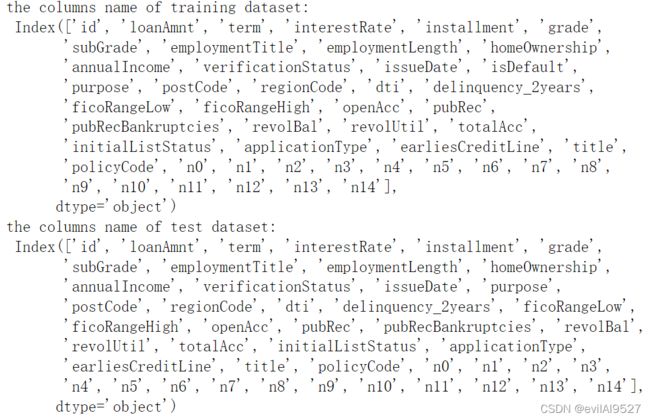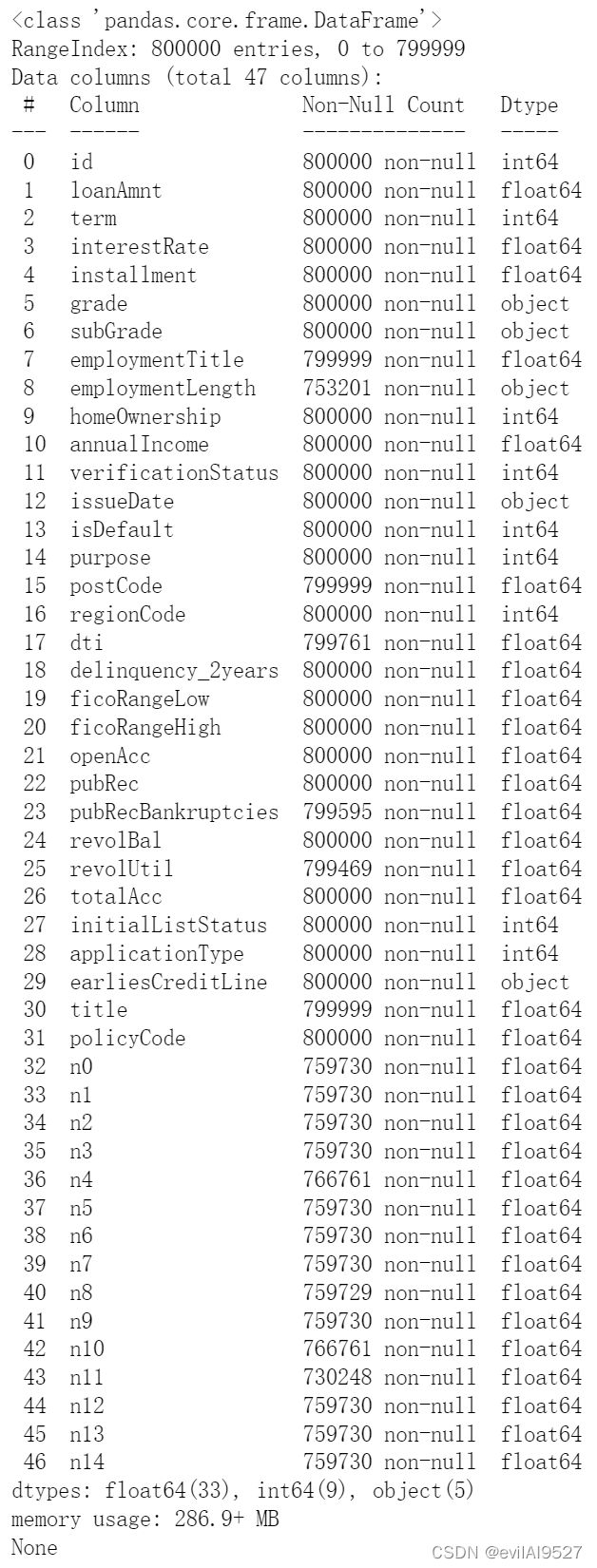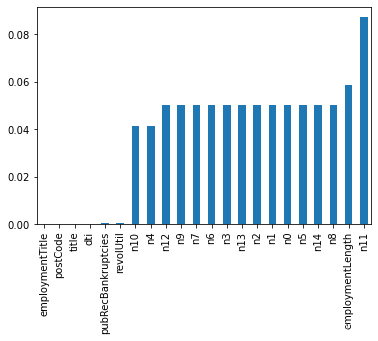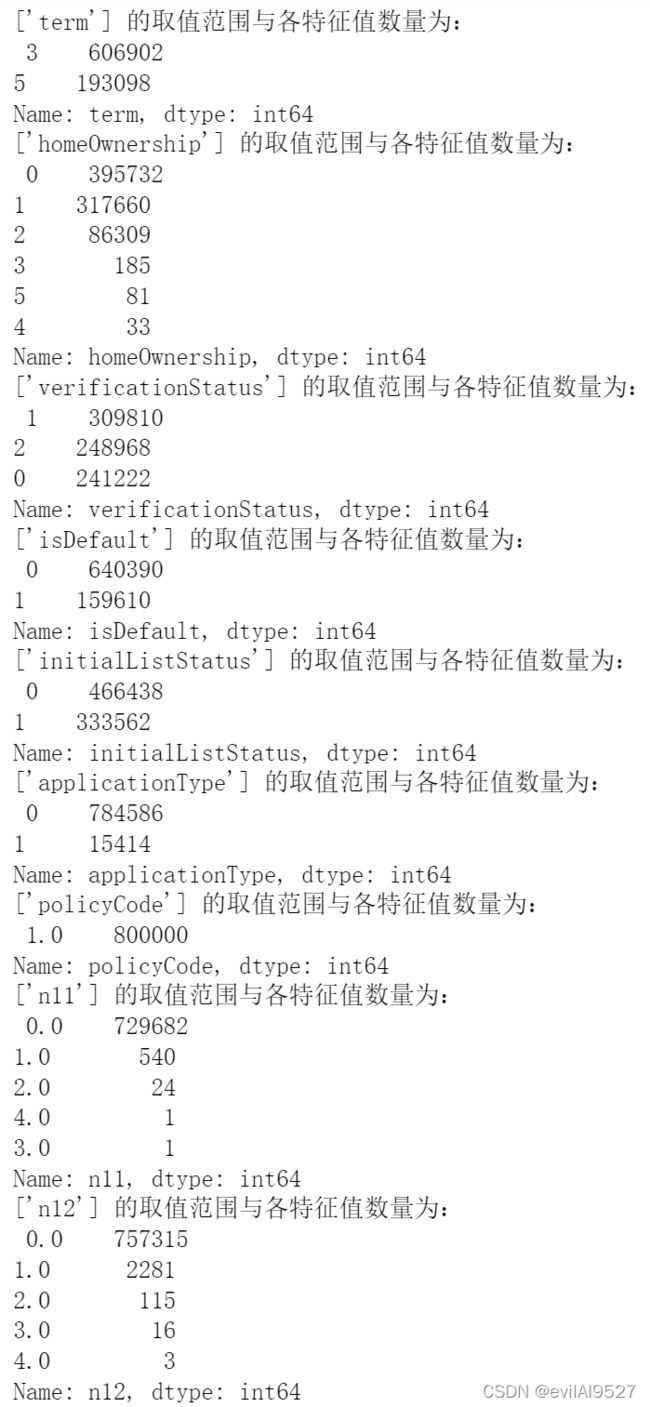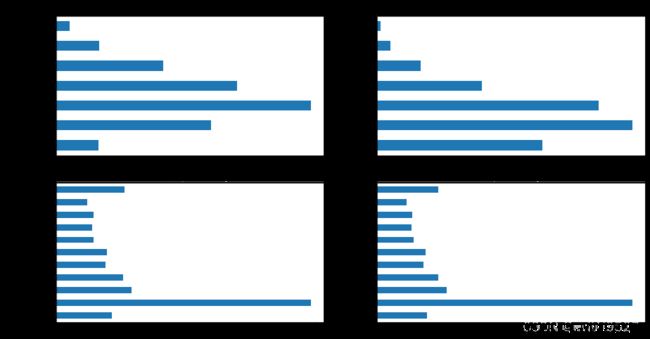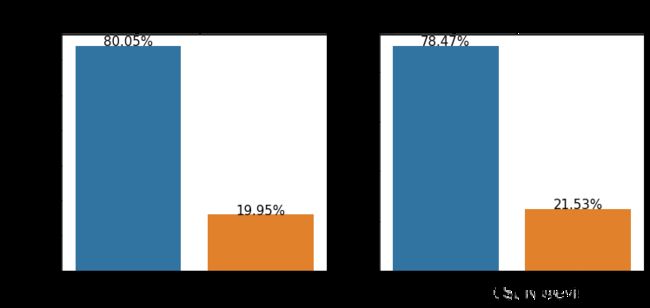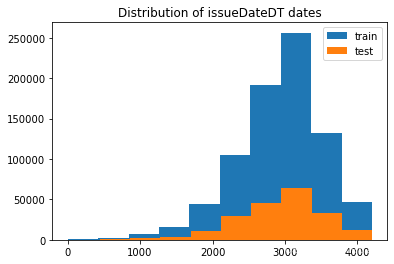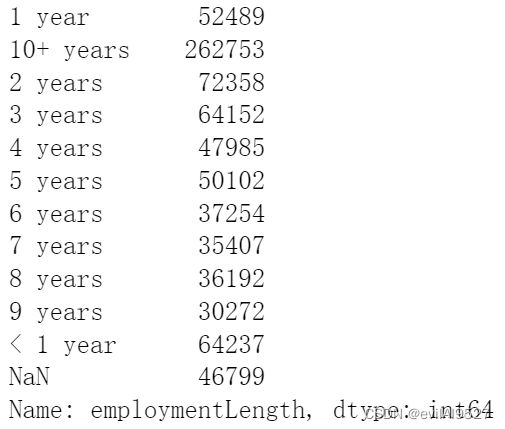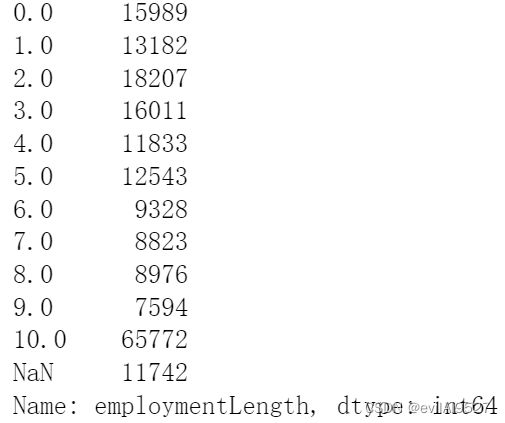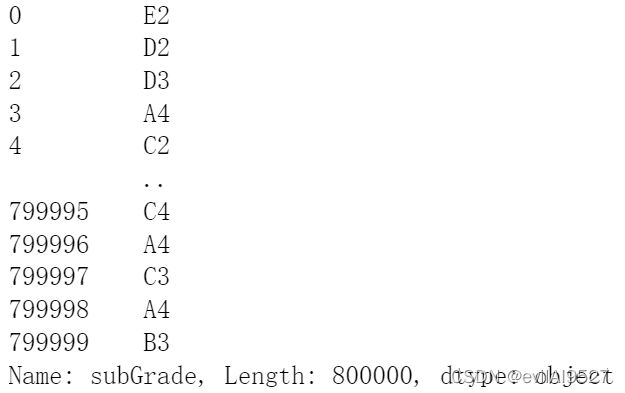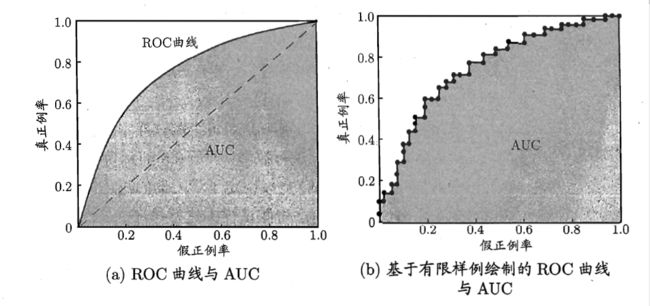数据挖掘项目:金融风控-贷款违约预测
项目地址:team-learning-data-mining/FinancialRiskControl at master · datawhalechina/team-learning-data-mining · GitHub
本文主要根据自某信贷平台的贷款记录进行预测,以金融风控中的个人信贷为背景,要求根据贷款申请人的数据信息预测其是否有违约的可能,以此判断是否通过此项贷款,是一个典型的多分类的问题。本文完整的陈述了从数据探索到特征工程到构建模型的全过程。
一、背景
总数据量超过120w,包含47列变量信息,其中15列为匿名变量。其中80万条作为训练集,20万条作为测试集A,20万条作为测试集B,同时会对employmentTitle、purpose、postCode和title等信息进行脱敏。
二、数据描述
train.csv
- id 为贷款清单分配的唯一信用证标识
- loanAmnt 贷款金额
- term 贷款期限(year)
- interestRate 贷款利率
- installment 分期付款金额
- grade 贷款等级
- subGrade 贷款等级之子级
- employmentTitle 就业职称
- employmentLength 就业年限(年)
- homeOwnership 借款人在登记时提供的房屋所有权状况
- annualIncome 年收入
- verificationStatus 验证状态
- issueDate 贷款发放的月份
- purpose 借款人在贷款申请时的贷款用途类别
- postCode 借款人在贷款申请中提供的邮政编码的前3位数字
- regionCode 地区编码
- dti 债务收入比
- delinquency_2years 借款人过去2年信用档案中逾期30天以上的违约事件数
- ficoRangeLow 借款人在贷款发放时的fico所属的下限范围
- ficoRangeHigh 借款人在贷款发放时的fico所属的上限范围
- openAcc 借款人信用档案中未结信用额度的数量
- pubRec 贬损公共记录的数量
- pubRecBankruptcies 公开记录清除的数量
- revolBal 信贷周转余额合计
- revolUtil 循环额度利用率,或借款人使用的相对于所有可用循环信贷的信贷金额
- totalAcc 借款人信用档案中当前的信用额度总数
- initialListStatus 贷款的初始列表状态
- applicationType 表明贷款是个人申请还是与两个共同借款人的联合申请
- earliesCreditLine 借款人最早报告的信用额度开立的月份
- title 借款人提供的贷款名称
- policyCode 公开可用的策略代码=1新产品不公开可用的策略代码=2
- n系列匿名特征 匿名特征n0-n14,为一些贷款人行为计数特征的处理
三、数据探索
3.1 导入库以及数据读取
import pandas as pd
pd.set_option('display.max_rows',None)
pd.set_option('display.max_columns',None)
import numpy as np
import matplotlib.pyplot as plt
import seaborn as sns
import datetime
from tqdm import tqdm
from sklearn.preprocessing import LabelEncoder
from sklearn.feature_selection import SelectKBest
from sklearn.feature_selection import chi2
from sklearn.preprocessing import MinMaxScaler
import xgboost as xgb
import lightgbm as lgb
from catboost import CatBoostRegressor
import warnings
from sklearn.model_selection import StratifiedKFold, KFold
from sklearn.metrics import accuracy_score, f1_score, roc_auc_score, log_loss
warnings.filterwarnings('ignore')
#数据导入
train = pd.read_csv('D:/myP/financial_risk/train.csv')
testA = pd.read_csv('D:/myP/financial_risk/testA.csv')
print('Train data shape:',train.shape)
print('TestA data shape:',testA.shape)3.2 查看数据包含的特征
print('the columns name of training dataset:\n',train.columns)
print('the columns name of test dataset:\n',testA.columns)分析:
- train文件比testA文件多了特征“isDefault”;
- isDefault是需要预测的目标变量;
- 数据探索时着重分析train文件,testA文件类似
3.3 查看数据信息
train.info()分析:
- trian.csv文件包含80万行数据,47个特征;
- 表中展示了每个特征的数据类型和非空数值;
- n0 ~ n14都有较多的空值,约4万个。
3.4 查看数据集各个特征的一些基本统计量
train.describe()3.5 具体的查看缺失特征及缺失率
# 缺失值可视化
missing = train.isnull().sum()/len(train)
missing = missing[missing > 0]
missing.sort_values(inplace=True) #排个序
missing.plot.bar()- 纵向了解哪些列存在 “nan”, 并可以把nan的个数打印,主要的目的在于查看某一列nan存在的个数是否真的很大,如果nan存在的过多,说明这一列对label的影响几乎不起作用了,可以考虑删掉。如果缺失值很小一般可以选择填充。
- 另外可以横向比较,如果在数据集中,某些样本数据的大部分列都是缺失的且样本足够的情况下可以考虑删除。
查看训练集测试集中特征属性只有一值的特征
#找出训练数据集(train)和测试数据集(tset)中所有特征值唯一的特征
one_value_fea = [col for col in train.columns if train[col].nunique() <= 1]
one_value_fea_test = [col for col in testA.columns if testA[col].nunique() <= 1]
print(one_value_fea, one_value_fea_test)分析:
- 47列数据中有22列都有缺值;
- ‘policyCode’具有一个唯一值(或全部缺失)
3.6 查看特征的数值类型有哪些,对象类型有哪些
- 特征一般都是由类别型特征和数值型特征组成,而数值型特征又分为连续型和离散型。
- 类别型特征有时具有非数值关系,有时也具有数值关系。比如‘grade’中的等级A,B,C等,是否只是单纯的分类,还是A优于其他要结合业务判断。
- 数值型特征本是可以直接入模的,但往往风控人员要对其做分箱,转化为WOE编码进而做标准评分卡等操作。从模型效果上来看,特征分箱主要是为了降低变量的复杂性,减少变量噪音对模型的影响,提高自变量和因变量的相关度。从而使模型更加稳定。
#判断并打印数值型特征(除object外的所有特征)
numerical_fea = list(train.select_dtypes(exclude=['object']).columns)
print(numerical_fea)#打印属性为object的特征值
category_fea = list(filter(lambda x: x not in numerical_fea, list(train.columns)))
print(category_fea) ![]()
3.7 数值型变量分析
#写一个函数来区分连续性变量和离散型变量(依据变量的个数)
def get_numerical_serial_fea(data,feas):
numerical_serial_fea = []
numerical_noserial_fea = []
for fea in feas:
temp = data[fea].nunique()
if temp <= 10:
numerical_noserial_fea.append(fea)
continue
numerical_serial_fea.append(fea)
return numerical_serial_fea,numerical_noserial_fea
#对测试集进行处理
numerical_serial_fea,numerical_noserial_fea = get_numerical_serial_fea(train,numerical_fea)
#打印连续型变量及其个数
print(numerical_serial_fea,len(numerical_serial_fea))#打印离散型变量
print(numerical_noserial_fea, len(numerical_noserial_fea))分析:一共有 9个离散型变量和33个连续型变量
3.7.1 数值离散型变量分析(9个)
#离散型变量
for fea in numerical_noserial_fea:
a = train[fea].value_counts()
print([fea],'的取值与取值数量为:\n',a)3.7.2 连续型变量分析(33个)
f = pd.melt(train, value_vars=numerical_serial_fea)
g = sns.FacetGrid(f, col="variable", col_wrap=2, sharex=False, sharey=False)
g = g.map(sns.displot, "value")- 查看某一个数值型变量的分布,查看变量是否符合正态分布,如果不符合正太分布的变量可以log化后再观察下是否符合正态分布。
- 如果想统一处理一批数据变标准化 必须把这些之前已经正态化的数据提出
- 正态化的原因:一些情况下正态非正态可以让模型更快的收敛,一些模型要求数据正态(eg. GMM、KNN),保证数据不要过偏态即可,过于偏态可能会影响模型预测结果。
#绘制交易金额值分布
plt.figure(figsize=(16,12))
plt.suptitle('Transaction Values Distribution', fontsize=22)
plt.subplot(221) ##2代表行,2代表列,所以一共有4个图,1代表此时绘制第一个图。
sub_plot_1 = sns.distplot(train['loanAmnt'])
sub_plot_1.set_title("loanAmnt Distribuition", fontsize=18)
sub_plot_1.set_xlabel("")
sub_plot_1.set_ylabel("Probability", fontsize=15)
plt.subplot(222)
sub_plot_2 = sns.distplot(np.log(train['loanAmnt']))
sub_plot_2.set_title("loanAmnt (Log) Distribuition", fontsize=18)
sub_plot_2.set_xlabel("")
sub_plot_2.set_ylabel("Probability", fontsize=15)Text(0, 0.5, 'Probability')
3.7.3 非数值类别型变量分析(5个)
for fea in category_fea:
a = train[fea].value_counts()
print([fea],'的取值与取值数量为:\n',a)分析:
- 上面用value_counts()等函数看了特征属性的分布,但是图表是概括原始信息最便捷的方式。
- 同一份数据集,在不同的尺度刻画上显示出来的图形反映的规律是不一样的。python将数据转化成图表,但结论是否正确需要由你保证。
3.8 变量分布可视化
3.8.1 单一变量分布可视化
plt.figure(figsize=(8, 8))
sns.barplot(train["employmentLength"].value_counts(dropna=False)[:20],
train["employmentLength"].value_counts(dropna=False).keys()[:20])
plt.show()3.8.2 根据y值不同可视化x某个特征的分布
- 首先查看类别型变量在不同目标值'isDefault'上的分布,演示了grade和employmentLength
train_loan_fr = train.loc[train['isDefault'] == 1]
train_loan_nofr = train.loc[train['isDefault'] == 0]
fig, ((ax1, ax2), (ax3, ax4)) = plt.subplots(2, 2, figsize=(15, 8))
train_loan_fr.groupby('grade')['grade'].count().plot(kind='barh', ax=ax1, title='Count of grade fraud')
train_loan_nofr.groupby('grade')['grade'].count().plot(kind='barh', ax=ax2, title='Count of grade non-fraud')
train_loan_fr.groupby('employmentLength')['employmentLength'].count().plot(kind='barh', ax=ax3, title='Count of employmentLength fraud')
train_loan_nofr.groupby('employmentLength')['employmentLength'].count().plot(kind='barh', ax=ax4, title='Count of employmentLength non-fraud')
plt.show()- 其次查看连续型变量在不同目标值'isDefault'上的log分布
fig, ((ax1, ax2)) = plt.subplots(1, 2, figsize=(15, 6))
#对训练数据定位目标值为1,再定位特征值为"loanAmnt",再应用log函数,再画图
train.loc[train['isDefault'] == 1] \
['loanAmnt'].apply(np.log) \
.plot(kind='hist',
bins=100,
title='Log Loan Amt - Fraud',
color='r',
xlim=(-3, 10),
ax= ax1)
train.loc[train['isDefault'] == 0] \
['loanAmnt'].apply(np.log) \
.plot(kind='hist',
bins=100,
title='Log Loan Amt - Not Fraud',
color='b',
xlim=(-3, 10),
ax=ax2)total = len(train) #数据行数80万
#对特征值'loanAmnt'按目标值'isDefault'分组累加2次
total_amt = train['loanAmnt'].sum()
plt.figure(figsize=(12,5))
plt.subplot(121)
#计数图,展示目标值"isDefault"的类别分布
plot_tr = sns.countplot(x='isDefault',data=train)
plot_tr.set_title("Fraud Loan Distribution \n 0: good user | 1: bad user", fontsize=14)
plot_tr.set_xlabel("Is fraud by count", fontsize=16)
plot_tr.set_ylabel('Count', fontsize=16)
for p in plot_tr.patches:
height = p.get_height()
plot_tr.text(p.get_x()+p.get_width()/2.,
height + 3,
'{:1.2f}%'.format(height/total*100),
ha="center", fontsize=15)
percent_amt = (train.groupby(['isDefault'])['loanAmnt'].sum())
percent_amt = percent_amt.reset_index()
plt.subplot(122)
plot_tr_2 = sns.barplot(x='isDefault', y='loanAmnt', dodge=True, data=percent_amt)
plot_tr_2.set_title("Total Amount in loanAmnt \n 0: good user | 1: bad user", fontsize=14)
plot_tr_2.set_xlabel("Is fraud by percent", fontsize=16)
plot_tr_2.set_ylabel('Total Loan Amount Scalar', fontsize=16)
for p in plot_tr_2.patches:
height = p.get_height()
plot_tr_2.text(p.get_x()+p.get_width()/2.,
height + 3,
'{:1.2f}%'.format(height/total_amt * 100),
ha="center", fontsize=15) 3.9 时间格式数据处理及查看
将"issueDate"转化为"issueDateDT"("issueDate"中最早的一天为2007-06-01,所以"startdate"为2007-06-01)
#train的特征值"issueDate"转化成时间格式,转化为离开始的天数
train['issueDate'] = pd.to_datetime(train['issueDate'],format='%Y-%m-%d')
startdate = datetime.datetime.strptime('2007-06-01', '%Y-%m-%d')
train['issueDateDT'] = train['issueDate'].apply(lambda x: x-startdate).dt.days
#testA的"issueDate"转化成时间格式,转化为离开始的天数
testA['issueDate'] = pd.to_datetime(testA['issueDate'],format='%Y-%m-%d')
testA['issueDateDT'] = testA['issueDate'].apply(lambda x: x-startdate).dt.days
#作图
plt.hist(train['issueDateDT'], label='train');
plt.hist(testA['issueDateDT'], label='test');
plt.legend();
plt.title('Distribution of issueDateDT dates');
#train 和 test issueDateDT 日期有重叠 所以使用基于时间的分割进行验证是不明智的3.10 掌握透视图可以让我们更好的了解数据
index,columns和values分别为行,列和数据
pivot = pd.pivot_table(train, index=['grade'], columns=['issueDateDT'], values=['loanAmnt'], aggfunc=np.sum)
pivot3.10.1 用pandas_profiling生成数据报告
import pandas_profiling
pfr = pandas_profiling.ProfileReport(train)
pfr.to_file("./example.html")四、特征工程
4.1 目录
- 数据预处理:
- 缺失值的填充
- 时间格式处理
- 对象类型特征转换到数值
- 异常值处理:
- 基于3segama原则
- 基于箱型图
- 数据分箱
- 固定宽度分箱
- 分位数分箱
- 离散数值型数据分箱
- 连续数值型数据分箱
- 卡方分箱
- 特征交互
- 特征和特征之间组合
- 特征和特征之间衍生
- 其他特征衍生的尝试
- 特征编码
- one-hot编码
- label-encode编码
- 特征选择
- 1 Filter
- 2 Wrapper (RFE)
- 3 Embedded
4.2 缺失值填充
- 把所有缺失值替换为指定的值0
- 向用缺失值上面的值替换缺失值
- 纵向用缺失值下面的值替换缺失值,且设置最多只填充两个连续的缺失值
4.2.1 查看缺失值的情况:
#将目标值从数值型变量中去除
numerical_fea.remove('isDefault')
train.isnull().sum()#按照train训练数据的中位数填充数值型特征的缺失值
train[numerical_fea] = train[numerical_fea].fillna(train[numerical_fea].median())
testA[numerical_fea] = testA[numerical_fea].fillna(train[numerical_fea].median())
4.2.2 时间格式处理
['issueDate']为时间格式特征,需要先转化为时间格式。
#转化成时间格式
for data in [train, testA]:
data['issueDate'] = pd.to_datetime(data['issueDate'],format='%Y-%m-%d')
startdate = datetime.datetime.strptime('2007-06-01', '%Y-%m-%d')
#构造时间特征
data['issueDateDT'] = data['issueDate'].apply(lambda x: x-startdate).dt.days4.2.2.1 对象类型特征‘employmentLength’转换到数值
train['employmentLength'].value_counts(dropna=False).sort_index()#定义一个函数:非零值取空格前的数字,且设置为int8格式
def employmentLength_to_int(s):
if pd.isnull(s):
return s
else:
return np.int8(s.split()[0])
for data in [train, testA]:
data['employmentLength'].replace(to_replace='10+ years', value='10 years', inplace=True)
data['employmentLength'].replace('< 1 year', '0 years', inplace=True)
data['employmentLength'] = data['employmentLength'].apply(employmentLength_to_int)
data['employmentLength'].value_counts(dropna=False).sort_index()4.2.2.2 对‘earliesCreditLine’进行预处理(只保留年份)
data['earliesCreditLine'].value_counts(dropna=False).sort_index()#取最后4个数字作为年份
for data in [train, testA]:
data['earliesCreditLine'] = data['earliesCreditLine'].apply(lambda s: int(s[-4:]))
data['earliesCreditLine'].value_counts(dropna=False).sort_index()4.2.3 类别特征处理
- 查看各类型的类型数量:
# 部分类别特征
cate_features = ['grade', 'subGrade', 'verificationStatus', 'purpose', 'postCode', 'regionCode','applicationType', 'initialListStatus', 'title', 'policyCode']
for f in cate_features:
print(f, '类型数:', train[f].nunique())4.2.3.1 将‘grade’映射到数的范围:
for data in [train, testA]:
data['grade'] = data['grade'].map({'A':1,'B':2,'C':3,'D':4,'E':5,'F':6,'G':7})
train['grade']4.2.3.2 将类型数在2之上,且不是高维稀疏的纯分类特征,转化为one-hot编码
# 类型数在2之上,又不是高维稀疏的,且纯分类特征
train = pd.get_dummies(train, columns=['subGrade', 'homeOwnership', 'verificationStatus', 'purpose', 'regionCode'], drop_first=True)4.3 异常值处理
- 当你发现异常值后,一定要先分清是什么原因导致的异常值,然后再考虑如何处理。首先,如果这一异常值并不代表一种规律性的,而是极其偶然的现象,或者说你并不想研究这种偶然的现象,这时可以将其删除。其次,如果异常值存在且代表了一种真实存在的现象,那就不能随便删除。在现有的欺诈场景中很多时候欺诈数据本身相对于正常数据来说就是异常的,我们要把这些异常点纳入,重新拟合模型,研究其规律。能用监督的用监督模型,不能用的还可以考虑用异常检测的算法来做。
- 注意test的数据不能删。
4.3.1 检测异常的方法一:均方差
在统计学中,如果一个数据分布近似正态,那么大约 68% 的数据值会在均值的一个标准差范围内,大约 95% 会在两个标准差范围内,大约 99.7% 会在三个标准差范围内。
#判断正常值OR异常值
#定义一个函数把数据集中<3或>3倍方差的数值删除
def find_outliers_by_3segama(data,fea):
data_std = np.std(data[fea]) #方差
data_mean = np.mean(data[fea]) #均值
outliers_cut_off = data_std * 3
#均值±3*方差设为上下线
lower_rule = data_mean - outliers_cut_off
upper_rule = data_mean + outliers_cut_off
data[fea+'_outliers'] = data[fea].apply(lambda x:str('异常值') if x > upper_rule or x < lower_rule else '正常值')
return data
for fea in numerical_serial_fea:
train = find_outliers_by_3segama(train,fea)
print(train[fea+'_outliers'].value_counts())
print(train.groupby(fea+'_outliers')['isDefault'].sum())
print('*分隔符*'*4)正常值 800000 Name: id_outliers, dtype: int64 id_outliers 正常值 159610 Name: isDefault, dtype: int64 *分隔符**分隔符**分隔符**分隔符* 正常值 800000 Name: loanAmnt_outliers, dtype: int64 loanAmnt_outliers 正常值 159610 Name: isDefault, dtype: int64 *分隔符**分隔符**分隔符**分隔符* 正常值 800000 Name: term_outliers, dtype: int64 term_outliers 正常值 159610 Name: isDefault, dtype: int64 *分隔符**分隔符**分隔符**分隔符* 正常值 794259 异常值 5741 Name: interestRate_outliers, dtype: int64 interestRate_outliers 异常值 2916 正常值 156694 Name: isDefault, dtype: int64 *分隔符**分隔符**分隔符**分隔符* 正常值 792046 异常值 7954 Name: installment_outliers, dtype: int64 installment_outliers 异常值 2152 正常值 157458 Name: isDefault, dtype: int64 *分隔符**分隔符**分隔符**分隔符* 正常值 800000 Name: employmentTitle_outliers, dtype: int64 employmentTitle_outliers 正常值 159610 Name: isDefault, dtype: int64 *分隔符**分隔符**分隔符**分隔符* 正常值 799701 异常值 299 Name: homeOwnership_outliers, dtype: int64 homeOwnership_outliers 异常值 62 正常值 159548 Name: isDefault, dtype: int64 *分隔符**分隔符**分隔符**分隔符* 正常值 793973 异常值 6027 Name: annualIncome_outliers, dtype: int64 annualIncome_outliers 异常值 756 正常值 158854 Name: isDefault, dtype: int64 *分隔符**分隔符**分隔符**分隔符* 正常值 800000 Name: verificationStatus_outliers, dtype: int64 verificationStatus_outliers 正常值 159610 Name: isDefault, dtype: int64 *分隔符**分隔符**分隔符**分隔符* 正常值 783003 异常值 16997 Name: purpose_outliers, dtype: int64 purpose_outliers 异常值 3635 正常值 155975 Name: isDefault, dtype: int64 *分隔符**分隔符**分隔符**分隔符* 正常值 798931 异常值 1069 Name: postCode_outliers, dtype: int64 postCode_outliers 异常值 221 正常值 159389 Name: isDefault, dtype: int64 *分隔符**分隔符**分隔符**分隔符* 正常值 799994 异常值 6 Name: regionCode_outliers, dtype: int64 regionCode_outliers 异常值 1 正常值 159609 Name: isDefault, dtype: int64 *分隔符**分隔符**分隔符**分隔符* 正常值 798440 异常值 1560 Name: dti_outliers, dtype: int64 dti_outliers 异常值 466 正常值 159144 Name: isDefault, dtype: int64 *分隔符**分隔符**分隔符**分隔符* 正常值 778245 异常值 21755 Name: delinquency_2years_outliers, dtype: int64 delinquency_2years_outliers 异常值 5089 正常值 154521 Name: isDefault, dtype: int64 *分隔符**分隔符**分隔符**分隔符* 正常值 788261 异常值 11739 Name: ficoRangeLow_outliers, dtype: int64 ficoRangeLow_outliers 异常值 778 正常值 158832 Name: isDefault, dtype: int64 *分隔符**分隔符**分隔符**分隔符* 正常值 788261 异常值 11739 Name: ficoRangeHigh_outliers, dtype: int64 ficoRangeHigh_outliers 异常值 778 正常值 158832 Name: isDefault, dtype: int64 *分隔符**分隔符**分隔符**分隔符* 正常值 790889 异常值 9111 Name: openAcc_outliers, dtype: int64 openAcc_outliers 异常值 2195 正常值 157415 Name: isDefault, dtype: int64 *分隔符**分隔符**分隔符**分隔符* 正常值 792471 异常值 7529 Name: pubRec_outliers, dtype: int64 pubRec_outliers 异常值 1701 正常值 157909 Name: isDefault, dtype: int64 *分隔符**分隔符**分隔符**分隔符* 正常值 794120 异常值 5880 Name: pubRecBankruptcies_outliers, dtype: int64 pubRecBankruptcies_outliers 异常值 1423 正常值 158187 Name: isDefault, dtype: int64 *分隔符**分隔符**分隔符**分隔符* 正常值 790001 异常值 9999 Name: revolBal_outliers, dtype: int64 revolBal_outliers 异常值 1359 正常值 158251 Name: isDefault, dtype: int64 *分隔符**分隔符**分隔符**分隔符* 正常值 799948 异常值 52 Name: revolUtil_outliers, dtype: int64 revolUtil_outliers 异常值 23 正常值 159587 Name: isDefault, dtype: int64 *分隔符**分隔符**分隔符**分隔符* 正常值 791663 异常值 8337 Name: totalAcc_outliers, dtype: int64 totalAcc_outliers 异常值 1668 正常值 157942 Name: isDefault, dtype: int64 *分隔符**分隔符**分隔符**分隔符* 正常值 800000 Name: initialListStatus_outliers, dtype: int64 initialListStatus_outliers 正常值 159610 Name: isDefault, dtype: int64 *分隔符**分隔符**分隔符**分隔符* 正常值 784586 异常值 15414 Name: applicationType_outliers, dtype: int64 applicationType_outliers 异常值 3875 正常值 155735 Name: isDefault, dtype: int64 *分隔符**分隔符**分隔符**分隔符* 正常值 775134 异常值 24866 Name: title_outliers, dtype: int64 title_outliers 异常值 3900 正常值 155710 Name: isDefault, dtype: int64 *分隔符**分隔符**分隔符**分隔符* 正常值 800000 Name: policyCode_outliers, dtype: int64 policyCode_outliers 正常值 159610 Name: isDefault, dtype: int64 *分隔符**分隔符**分隔符**分隔符* 正常值 782773 异常值 17227 Name: n0_outliers, dtype: int64 n0_outliers 异常值 3485 正常值 156125 Name: isDefault, dtype: int64 *分隔符**分隔符**分隔符**分隔符* 正常值 790500 异常值 9500 Name: n1_outliers, dtype: int64 n1_outliers 异常值 2491 正常值 157119 Name: isDefault, dtype: int64 *分隔符**分隔符**分隔符**分隔符* 正常值 789067 异常值 10933 Name: n2_outliers, dtype: int64 n2_outliers 异常值 3205 正常值 156405 Name: isDefault, dtype: int64 *分隔符**分隔符**分隔符**分隔符* 正常值 789067 异常值 10933 Name: n3_outliers, dtype: int64 n3_outliers 异常值 3205 正常值 156405 Name: isDefault, dtype: int64 *分隔符**分隔符**分隔符**分隔符* 正常值 788660 异常值 11340 Name: n4_outliers, dtype: int64 n4_outliers 异常值 2476 正常值 157134 Name: isDefault, dtype: int64 *分隔符**分隔符**分隔符**分隔符* 正常值 790355 异常值 9645 Name: n5_outliers, dtype: int64 n5_outliers 异常值 1858 正常值 157752 Name: isDefault, dtype: int64 *分隔符**分隔符**分隔符**分隔符* 正常值 786006 异常值 13994 Name: n6_outliers, dtype: int64 n6_outliers 异常值 3182 正常值 156428 Name: isDefault, dtype: int64 *分隔符**分隔符**分隔符**分隔符* 正常值 788430 异常值 11570 Name: n7_outliers, dtype: int64 n7_outliers 异常值 2746 正常值 156864 Name: isDefault, dtype: int64 *分隔符**分隔符**分隔符**分隔符* 正常值 789625 异常值 10375 Name: n8_outliers, dtype: int64 n8_outliers 异常值 2131 正常值 157479 Name: isDefault, dtype: int64 *分隔符**分隔符**分隔符**分隔符* 正常值 786384 异常值 13616 Name: n9_outliers, dtype: int64 n9_outliers 异常值 3953 正常值 155657 Name: isDefault, dtype: int64 *分隔符**分隔符**分隔符**分隔符* 正常值 788979 异常值 11021 Name: n10_outliers, dtype: int64 n10_outliers 异常值 2639 正常值 156971 Name: isDefault, dtype: int64 *分隔符**分隔符**分隔符**分隔符* 正常值 799434 异常值 566 Name: n11_outliers, dtype: int64 n11_outliers 异常值 112 正常值 159498 Name: isDefault, dtype: int64 *分隔符**分隔符**分隔符**分隔符* 正常值 797585 异常值 2415 Name: n12_outliers, dtype: int64 n12_outliers 异常值 545 正常值 159065 Name: isDefault, dtype: int64 *分隔符**分隔符**分隔符**分隔符* 正常值 788907 异常值 11093 Name: n13_outliers, dtype: int64 n13_outliers 异常值 2482 正常值 157128 Name: isDefault, dtype: int64 *分隔符**分隔符**分隔符**分隔符* 正常值 788884 异常值 11116 Name: n14_outliers, dtype: int64 n14_outliers 异常值 3364 正常值 156246 Name: isDefault, dtype: int64 *分隔符**分隔符**分隔符**分隔符*s
删除异常值
#将有异常值的行删除
for fea in numerical_serial_fea:
train = train[train[fea+'_outliers']=='正常值']
train = train.reset_index(drop=True)
train.shape(612742, 89)
4.3.2 检测异常的方法二:箱线图
- 四分位数会将数据分为三个点和四个区间,IQR = Q3 -Q1,下触须=Q1 − 1.5x IQR,上触须=Q3 + 1.5x IQR;
4.4 数据分箱
- 特征分箱的目的:
- 从模型效果上来看,特征分箱主要是为了降低变量的复杂性,减少变量噪音对模型的影响,提高自变量和因变量的相关度。从而使模型更加稳定。
- 数据分桶的对象:
- 将连续变量离散化
- 将多状态的离散变量合并成少状态
- 分箱的原因:
- 数据的特征内的值跨度可能比较大,对有监督和无监督中如k-均值聚类它使用欧氏距离作为相似度函数来测量数据点之间的相似度。都会造成大吃小的影响,其中一种解决方法是对计数值进行区间量化即数据分桶也叫做数据分箱,然后使用量化后的结果。
-
分箱的优点:
- 处理缺失值:当数据源可能存在缺失值,此时可以把null单独作为一个分箱。
- 处理异常值:当数据中存在离群点时,可以把其通过分箱离散化处理,从而提高变量的鲁棒性(抗干扰能力)。例如,age若出现200这种异常值,可分入“age > 60”这个分箱里,排除影响。
- 业务解释性:我们习惯于线性判断变量的作用,当x越来越大,y就越来越大。但实际x与y之间经常存在着非线性关系,此时可经过WOE变换。
-
特别要注意一下分箱的基本原则:
- (1)最小分箱占比不低于5%
- (2)箱内不能全部是好客户
- (3)连续箱单调
4.4.1 固定宽度分箱
当数值横跨多个数量级时,最好按照 10 的幂(或任何常数的幂)来进行分组:0~9、10~99、100~999、1000~9999,等等。固定宽度分箱非常容易计算,但如果计数值中有比较大的缺口,就会产生很多没有任何数据的空箱子。
# 通过除法映射到间隔均匀的分箱中,每个分箱的取值范围都是loanAmnt/1000
data['loanAmnt_bin1'] = np.floor_divide(data['loanAmnt'], 1000)
# 通过对数函数映射到指数宽度分箱
data['loanAmnt_bin2'] = np.floor(np.log10(data['loanAmnt']))4.4.2 分位数分箱
data['loanAmnt_bin3'] = pd.qcut(data['loanAmnt'], 10, labels=False)4.5 特征交互
- 交互特征的构造非常简单,使用起来却代价不菲。如果线性模型中包含有交互特征对,那它的训练时间和评分时间就会从 O(n) 增加到 O(n2),其中 n 是单一特征的数量。
for col in ['grade', 'subGrade']:
#将训练数据按col分组,取目标值'isDefault'数据,计算不同'grade'的均值,加上索引列,将col的列名改成col_taregt_mean
temp_dict = train.groupby([col])['isDefault'].agg(['mean']).reset_index().rename(columns={'mean': col + '_target_mean'})
#将temp_dict转化为字典{grade: isDefault_mean}
temp_dict.index = temp_dict[col].values
temp_dict = temp_dict[col + '_target_mean'].to_dict()
#通过字典新建一个col_target_mean列
train[col + '_target_mean'] = train[col].map(temp_dict)
testA[col + '_target_mean'] = testA[col].map(temp_dict)# 其他衍生变量 mean 和 std
for df in [train, testA]:
for item in ['n0','n1','n2','n3','n4','n5','n6','n7','n8','n9','n10','n11','n12','n13','n14']:
df['grade_to_mean_' + item] = df['grade'] / df.groupby([item])['grade'].transform('mean')
df['grade_to_std_' + item] = df['grade'] / df.groupby([item])['grade'].transform('std')4.6 特征编码
labelEncode 直接放入树模型中
# 高维类别特征需要进行转换label-encode:subGrade,postCode,title
from tqdm import tqdm
from sklearn.preprocessing import LabelEncoder
for col in tqdm(['employmentTitle', 'postCode', 'title','subGrade']):
le = LabelEncoder()
le.fit(list(train[col].astype(str).values) + list(testA[col].astype(str).values))
train[col] = le.transform(list(train[col].astype(str).values))
testA[col] = le.transform(list(testA[col].astype(str).values))
print('Label Encoding 完成')4.7 逻辑回归等模型要单独增加的特征工程
- 对特征做归一化,去除相关性高的特征
- 归一化目的是让训练过程更好更快的收敛,避免特征大吃小的问题
- 去除相关性是增加模型的可解释性,加快预测过程。
# 举例归一化过程
#伪代码
for fea in [要归一化的特征列表]:
data[fea] = ((data[fea] - np.min(data[fea])) / (np.max(data[fea]) - np.min(data[fea])))4.8 特征选择
- 特征选择技术可以精简掉无用的特征,以降低最终模型的复杂性,它的最终目的是得到一个简约模型,在不降低预测准确率或对预测准确率影响不大的情况下提高计算速度。特征选择不是为了减少训练时间(实际上,一些技术会增加总体训练时间),而是为了减少模型评分时间。
4.8.1 特征选择的方法:
- 1 Filter
- 方差选择法
- 相关系数法(pearson 相关系数)
- 卡方检验
- 互信息法
- 2 Wrapper (RFE)
- 递归特征消除法
- 3 Embedded
- 基于惩罚项的特征选择法
- 基于树模型的特征选择
4.8.2 Filter
- 基于特征间的关系进行筛选
方差选择法
- 方差选择法中,先要计算各个特征的方差,然后根据设定的阈值,选择方差大于阈值的特征
from sklearn.feature_selection import VarianceThreshold
#其中参数threshold为方差的阈值
VarianceThreshold(threshold=3).fit_transform(train,target_train)相关系数法
- Pearson 相关系数 皮尔森相关系数是一种最简单的,可以帮助理解特征和响应变量之间关系的方法,该方法衡量的是变量之间的线性相关性。 结果的取值区间为 [-1,1] , -1 表示完全的负相关, +1表示完全的正相关,0 表示没有线性相关。
from sklearn.feature_selection import SelectKBest
from scipy.stats import pearsonr
#选择K个最好的特征,返回选择特征后的数据
#第一个参数为计算评估特征是否好的函数,该函数输入特征矩阵和目标向量,
#输出二元组(评分,P值)的数组,数组第i项为第i个特征的评分和P值。在此定义为计算相关系数
#参数k为选择的特征个数
SelectKBest(k=5).fit_transform(train,target_train)卡方检验
- 经典的卡方检验是用于检验自变量对因变量的相关性。 假设自变量有N种取值,因变量有M种取值,考虑自变量等于i且因变量等于j的样本频数的观察值与期望的差距。 其统计量如下: χ2=∑(A−T)2T,其中A为实际值,T为理论值
- (注:卡方只能运用在正定矩阵上,否则会报错Input X must be non-negative)
from sklearn.feature_selection import SelectKBest
from sklearn.feature_selection import chi2
#参数k为选择的特征个数
SelectKBest(chi2, k=5).fit_transform(train,target_train)互信息法
- 经典的互信息也是评价自变量对因变量的相关性的。 在feature_selection库的SelectKBest类结合最大信息系数法可以用于选择特征,相关代码如下:
from sklearn.feature_selection import SelectKBest
from minepy import MINE
#由于MINE的设计不是函数式的,定义mic方法将其为函数式的,
#返回一个二元组,二元组的第2项设置成固定的P值0.5
def mic(x, y):
m = MINE()
m.compute_score(x, y)
return (m.mic(), 0.5)
#参数k为选择的特征个数
SelectKBest(lambda X, Y: array(map(lambda x:mic(x, Y), X.T)).T, k=2).fit_transform(train,target_train)4.8.3 Wrapper (Recursive feature elimination,RFE)
- 递归特征消除法 递归消除特征法使用一个基模型来进行多轮训练,每轮训练后,消除若干权值系数的特征,再基于新的特征集进行下一轮训练。在feature_selection库的RFE类可以用于选择特征,相关代码如下(以逻辑回归为例):
from sklearn.feature_selection import RFE
from sklearn.linear_model import LogisticRegression
#递归特征消除法,返回特征选择后的数据
#参数estimator为基模型
#参数n_features_to_select为选择的特征个数
RFE(estimator=LogisticRegression(), n_features_to_select=2).fit_transform(train,target_train)4.8.4 Embedded
- 基于惩罚项的特征选择法 使用带惩罚项的基模型,除了筛选出特征外,同时也进行了降维。 在feature_selection库的SelectFromModel类结合逻辑回归模型可以用于选择特征,相关代码如下:
from sklearn.feature_selection import SelectFromModel
from sklearn.linear_model import LogisticRegression
#带L1惩罚项的逻辑回归作为基模型的特征选择
SelectFromModel(LogisticRegression(penalty="l1", C=0.1)).fit_transform(train,target_train)- 基于树模型的特征选择 树模型中GBDT也可用来作为基模型进行特征选择。 在feature_selection库的SelectFromModel类结合GBDT模型可以用于选择特征,相关代码如下:
from sklearn.feature_selection import SelectFromModel
from sklearn.ensemble import GradientBoostingClassifier
#GBDT作为基模型的特征选择
SelectFromModel(GradientBoostingClassifier()).fit_transform(train,target_train)本数据集中我们删除非入模特征后,并对缺失值填充,然后用计算协方差的方式看一下特征间相关性,然后进行模型训练
#"纵向用缺失值上面的值替换缺失值"
train = train.fillna(axis=0,method='ffill')
x_train = train.drop(['isDefault','id'], axis=1)
#计算协方差
data_corr = x_train.corrwith(train.isDefault) #计算相关性
result = pd.DataFrame(columns=['features', 'corr'])
result['features'] = data_corr.index
result['corr'] = data_corr.values
# 当然也可以直接看图
data_numeric = train[numerical_fea]
correlation = data_numeric.corr()
f , ax = plt.subplots(figsize = (7, 7))
plt.title('Correlation of Numeric Features with Price',y=1,size=16)
sns.heatmap(correlation,square = True, vmax=0.8)from sklearn.model_selection import KFold
#把'id','issueDate','isDefault',以及含有'_outliers'尾缀的删除
#把所有可入模的函数定义为features
features = [f for f in train.columns if f not in ['id','issueDate','isDefault'] and '_outliers' not in f]
#划分测试集和训练集
x_train = train[features]
x_test = testA[features]
y_train = train['isDefault']
def cv_model(clf, train_x, train_y, test_x, clf_name):
folds = 5 #k折训练的折数
seed = 2020 #随机数种子
kf = KFold(n_splits=folds, shuffle=True, random_state=seed) #实例化K折函数
data_train = np.zeros(train_x.shape[0]) #输入一个样本数*样本数的空矩阵
data_test = np.zeros(test_x.shape[0])
cv_scores = []
#i为第几折,train_index,valid_index分别为每一折训练、验证数据的索引
for i, (train_index, valid_index) in enumerate(kf.split(train_x, train_y)):
print('************************************ {} ************************************'.format(str(i+1))) #{}处填充第几折
#划分训练数据为trn_x训练集的特征值, trn_y训练集目标值, val_x验证集特征值, val_y验证集目标值
trn_x, trn_y, val_x, val_y = train_x.iloc[train_index], train_y[train_index], train_x.iloc[valid_index], train_y[valid_index]
#lightgbm模型
if clf_name == "lgb":
#clf为被实例化的模型'lgb',构造'训练矩阵'和'验证矩阵'
train_matrix = clf.Dataset(trn_x, label=trn_y)
valid_matrix = clf.Dataset(val_x, label=val_y)
#定义参数
params = {
'boosting_type': 'gbdt',
'objective': 'binary',
'metric': 'auc',
'min_child_weight': 5,
'num_leaves': 2 ** 5,
'lambda_l2': 10,
'feature_fraction': 0.8,
'bagging_fraction': 0.8,
'bagging_freq': 4,
'learning_rate': 0.1,
'seed': 2020,
'nthread': -1,
'n_jobs':24,
'verbose': -1,
}
#实例化model
model = clf.train(params, train_matrix, 50000, valid_sets=[train_matrix, valid_matrix], verbose_eval=200,early_stopping_rounds=200)
#验证集的预测试
val_pred = model.predict(val_x, num_iteration=model.best_iteration)
#测试集的预测值
test_pred = model.predict(test_x, num_iteration=model.best_iteration)
#1把特征值和特征值的权重zip;2按权重降序排序;3取前20构成一个列表
# print(list(sorted(zip(features, model.feature_importance("gain")), key=lambda x: x[1], reverse=True))[:20])
#xgboost模型
if clf_name == "xgb":
train_matrix = clf.DMatrix(trn_x , label=trn_y)
valid_matrix = clf.DMatrix(val_x , label=val_y)
params = {'booster': 'gbtree',
'objective': 'binary:logistic',
'eval_metric': 'auc',
'gamma': 1,
'min_child_weight': 1.5,
'max_depth': 5,
'lambda': 10,
'subsample': 0.7,
'colsample_bytree': 0.7,
'colsample_bylevel': 0.7,
'eta': 0.04,
'tree_method': 'exact',
'seed': 2020,
'nthread': -1,
"silent": True,
}
watchlist = [(train_matrix, 'train'),(valid_matrix, 'eval')]
model = clf.train(params, train_matrix, num_boost_round=50000, evals=watchlist, verbose_eval=200, early_stopping_rounds=200)
val_pred = model.predict(valid_matrix, ntree_limit=model.best_ntree_limit)
test_pred = model.predict(test_x , ntree_limit=model.best_ntree_limit)
#catboost模型
if clf_name == "cat":
params = {'learning_rate': 0.05, 'depth': 5, 'l2_leaf_reg': 10, 'bootstrap_type': 'Bernoulli', 'od_type': 'Iter', 'od_wait': 50, 'random_seed': 11, 'allow_writing_files': False}
model = clf(iterations=20000, **params)
model.fit(trn_x, trn_y, eval_set=(val_x, val_y),
cat_features=[], use_best_model=True, verbose=500)
val_pred = model.predict(val_x)
test_pred = model.predict(test_x)
data_train[valid_index] = val_pred
data_test = test_pred / kf.n_splits
cv_scores.append(roc_auc_score(val_y, val_pred))
print(cv_scores)
print("%s_scotrainre_list:" % clf_name, cv_scores)
print("%s_score_mean:" % clf_name, np.mean(cv_scores))
print("%s_score_std:" % clf_name, np.std(cv_scores))
return data_train, data_test
def lgb_model(x_train, y_train, x_test):
lgb_train, lgb_test = cv_model(lgb, x_train, y_train, x_test, "lgb")
return lgb_train, lgb_test
def xgb_model(x_train, y_train, x_test):
xgb_train, xgb_test = cv_model(xgb, x_train, y_train, x_test, "xgb")
return xgb_train, xgb_test
def cat_model(x_train, y_train, x_test):
cat_train, cat_test = cv_model(CatBoostRegressor, x_train, y_train, x_test, "cat")
lgb_train, lgb_test = lgb_model(x_train, y_train, x_test)************************************ 1 ************************************ Training until validation scores don't improve for 200 rounds [200] training's auc: 0.749225 valid_1's auc: 0.729679 [400] training's auc: 0.765075 valid_1's auc: 0.730496 [600] training's auc: 0.778745 valid_1's auc: 0.730435 Early stopping, best iteration is: [455] training's auc: 0.769202 valid_1's auc: 0.730686 [0.7306859913754798] ************************************ 2 ************************************ Training until validation scores don't improve for 200 rounds [200] training's auc: 0.749221 valid_1's auc: 0.731315 [400] training's auc: 0.765117 valid_1's auc: 0.731658 [600] training's auc: 0.778542 valid_1's auc: 0.731333 Early stopping, best iteration is: [407] training's auc: 0.765671 valid_1's auc: 0.73173 [0.7306859913754798, 0.7317304414673989] ************************************ 3 ************************************ Training until validation scores don't improve for 200 rounds [200] training's auc: 0.748436 valid_1's auc: 0.732775 [400] training's auc: 0.764216 valid_1's auc: 0.733173 Early stopping, best iteration is: [386] training's auc: 0.763261 valid_1's auc: 0.733261 [0.7306859913754798, 0.7317304414673989, 0.7332610441015461] ************************************ 4 ************************************ Training until validation scores don't improve for 200 rounds [200] training's auc: 0.749631 valid_1's auc: 0.728327 [400] training's auc: 0.765139 valid_1's auc: 0.728845 Early stopping, best iteration is: [286] training's auc: 0.756978 valid_1's auc: 0.728976 [0.7306859913754798, 0.7317304414673989, 0.7332610441015461, 0.7289759386807912] ************************************ 5 ************************************ Training until validation scores don't improve for 200 rounds [200] training's auc: 0.748414 valid_1's auc: 0.732727 [400] training's auc: 0.763727 valid_1's auc: 0.733531 [600] training's auc: 0.777489 valid_1's auc: 0.733566 Early stopping, best iteration is: [524] training's auc: 0.772372 valid_1's auc: 0.733772 [0.7306859913754798, 0.7317304414673989, 0.7332610441015461, 0.7289759386807912, 0.7337723979789789] lgb_scotrainre_list: [0.7306859913754798, 0.7317304414673989, 0.7332610441015461, 0.7289759386807912, 0.7337723979789789] lgb_score_mean: 0.7316851627208389 lgb_score_std: 0.0017424259863954693
testA_result = pd.read_csv('D:/myP/financial_risk/sample_submit.csv')
roc_auc_score(testA_result['isDefault'].values, lgb_test)0.7290917729487896
4.9 总结
特征工程是机器学习,甚至是深度学习中最为重要的一部分,在实际应用中往往也是所花费时间最多的一步。各种算法书中对特征工程部分的讲解往往少得可怜,因为特征工程和具体的数据结合的太紧密,很难系统地覆盖所有场景。本章主要是通过一些常用的方法来做介绍,例如缺失值异常值的处理方法详细对任何数据集来说都是适用的。但对于分箱等操作本章给出了具体的几种思路,需要读者自己探索。在特征工程中比赛和具体的应用还是有所不同的,在实际的金融风控评分卡制作过程中,由于强调特征的可解释性,特征分箱尤其重要。学有余力同学可以自行多尝试,希望大家在本节学习中有所收获。
五、建模与调参
5.1 内容介绍
-
逻辑回归模型:
- 理解逻辑回归模型;
- 逻辑回归模型的应用;
- 逻辑回归的优缺点;
-
树模型:
- 理解树模型;
- 树模型的应用;
- 树模型的优缺点;
-
集成模型
- 基于bagging思想的集成模型
- 随机森林模型
- 基于boosting思想的集成模型
- XGBoost模型
- LightGBM模型
- CatBoost模型
- 基于bagging思想的集成模型
-
模型对比与性能评估:
- 回归模型/树模型/集成模型;
- 模型评估方法;
- 模型评价结果;
-
模型调参:
- 贪心调参方法;
- 网格调参方法;
- 贝叶斯调参方法;
5.2 模型对比与性能评估
5.2.1 逻辑回归
-
优点
- 训练速度较快,分类的时候,计算量仅仅只和特征的数目相关;
- 简单易理解,模型的可解释性非常好,从特征的权重可以看到不同的特征对最后结果的影响;
- 适合二分类问题,不需要缩放输入特征;
- 内存资源占用小,只需要存储各个维度的特征值;
-
缺点
- 逻辑回归需要预先处理缺失值和异常值【见4.7】;
- 不能用Logistic回归去解决非线性问题,因为Logistic的决策面是线性的;
- 对多重共线性数据较为敏感,且很难处理数据不平衡的问题;
- 准确率并不是很高,因为形式非常简单,很难去拟合数据的真实分布;
5.2.2 决策树模型
-
优点
- 简单直观,生成的决策树可以可视化展示
- 数据不需要预处理,不需要归一化,不需要处理缺失数据
- 既可以处理离散值,也可以处理连续值
-
缺点
- 决策树算法非常容易过拟合,导致泛化能力不强(可进行适当的剪枝)
- 采用的是贪心算法,容易得到局部最优解
5.2.3 集成模型集成方法(ensemble method)
通过组合多个学习器来完成学习任务,通过集成方法,可以将多个弱学习器组合成一个强分类器,因此集成学习的泛化能力一般比单一分类器要好。
集成方法主要包括Bagging和Boosting,Bagging和Boosting都是将已有的分类或回归算法通过一定方式组合起来,形成一个更加强大的分类。两种方法都是把若干个分类器整合为一个分类器的方法,只是整合的方式不一样,最终得到不一样的效果。常见的基于Baggin思想的集成模型有:随机森林、基于Boosting思想的集成模型有:Adaboost、GBDT、XgBoost、LightGBM等。
Baggin和Boosting的区别总结如下:
- 样本选择上: Bagging方法的训练集是从原始集中有放回的选取,所以从原始集中选出的各轮训练集之间是独立的;而Boosting方法需要每一轮的训练集不变,只是训练集中每个样本在分类器中的权重发生变化。而权值是根据上一轮的分类结果进行调整
- 样例权重上: Bagging方法使用均匀取样,所以每个样本的权重相等;而Boosting方法根据错误率不断调整样本的权值,错误率越大则权重越大
- 预测函数上: Bagging方法中所有预测函数的权重相等;而Boosting方法中每个弱分类器都有相应的权重,对于分类误差小的分类器会有更大的权重
- 并行计算上: Bagging方法中各个预测函数可以并行生成;而Boosting方法各个预测函数只能顺序生成,因为后一个模型参数需要前一轮模型的结果。
5.2.4 模型评估方法
对于模型来说,其在训练集上面的误差我们称之为训练误差或者经验误差,而在测试集上的误差称之为测试误差。
对于我们来说,我们更关心的是模型对于新样本的学习能力,即我们希望通过对已有样本的学习,尽可能的将所有潜在样本的普遍规律学到手,而如果模型对训练样本学的太好,则有可能把训练样本自身所具有的一些特点当做所有潜在样本的普遍特点,这时候我们就会出现过拟合的问题。
因此我们通常将已有的数据集划分为训练集和测试集两部分,其中训练集用来训练模型,而测试集则是用来评估模型对于新样本的判别能力。
对于数据集的划分,我们通常要保证满足以下两个条件:
- 训练集和测试集的分布要与样本真实分布一致,即训练集和测试集都要保证是从样本真实分布中独立同分布采样而得;
- 训练集和测试集要互斥
对于数据集的划分有三种方法:留出法,交叉验证法和自助法,下面挨个介绍:
-
①留出法
留出法是直接将数据集D划分为两个互斥的集合,其中一个集合作为训练集S,另一个作为测试集T。需要注意的是在划分的时候要尽可能保证数据分布的一致性,即避免因数据划分过程引入额外的偏差而对最终结果产生影响。为了保证数据分布的一致性,通常我们采用分层采样的方式来对数据进行采样。
Tips: 通常,会将数据集D中大约2/3~4/5的样本作为训练集,其余的作为测试集。
-
②交叉验证法
k折交叉验证通常将数据集D分为k份,其中k-1份作为训练集,剩余的一份作为测试集,这样就可以获得k组训练/测试集,可以进行k次训练与测试,最终返回的是k个测试结果的均值。交叉验证中数据集的划分依然是依据分层采样的方式来进行。
对于交叉验证法,其k值的选取往往决定了评估结果的稳定性和保真性,通常k值选取10。
当k=1的时候,我们称之为留一法
-
③自助法
我们每次从数据集D中取一个样本作为训练集中的元素,然后把该样本放回,重复该行为m次,这样我们就可以得到大小为m的训练集,在这里面有的样本重复出现,有的样本则没有出现过,我们把那些没有出现过的样本作为测试集。
进行这样采样的原因是因为在D中约有36.8%的数据没有在训练集中出现过。留出法与交叉验证法都是使用分层采样的方式进行数据采样与划分,而自助法则是使用有放回重复采样的方式进行数据采样
数据集划分总结
- 对于数据量充足的时候,通常采用留出法或者k折交叉验证法来进行训练/测试集的划分;
- 对于数据集小且难以有效划分训练/测试集时使用自助法;
- 对于数据集小且可有效划分的时候最好使用留一法来进行划分,因为这种方法最为准确
5.2.5 模型评价标准
对于本次比赛,我们选用auc作为模型评价标准,类似的评价标准还有ks、f1-score等,具体介绍与实现大家可以回顾下task1中的内容。
一起来看一下auc到底是什么?
在逻辑回归里面,对于正负例的界定,通常会设一个阈值,大于阈值的为正类,小于阈值为负类。如果我们减小这个阀值,更多的样本会被识别为正类,提高正类的识别率,但同时也会使得更多的负类被错误识别为正类。为了直观表示这一现象,引入ROC。
根据分类结果计算得到ROC空间中相应的点,连接这些点就形成ROC curve,横坐标为False Positive Rate(FPR:假正率),纵坐标为True Positive Rate(TPR:真正率)。 一般情况下,这个曲线都应该处于(0,0)和(1,1)连线的上方,如图:
ROC曲线中的四个点:
- 点(0,1):即FPR=0, TPR=1,意味着FN=0且FP=0,将所有的样本都正确分类;
- 点(1,0):即FPR=1,TPR=0,最差分类器,避开了所有正确答案;
- 点(0,0):即FPR=TPR=0,FP=TP=0,分类器把每个实例都预测为负类;
- 点(1,1):分类器把每个实例都预测为正类
总之:ROC曲线越接近左上角,该分类器的性能越好,其泛化性能就越好。而且一般来说,如果ROC是光滑的,那么基本可以判断没有太大的overfitting。
但是对于两个模型,我们如何判断哪个模型的泛化性能更优呢?这里我们有主要以下两种方法:
如果模型A的ROC曲线完全包住了模型B的ROC曲线,那么我们就认为模型A要优于模型B;
如果两条曲线有交叉的话,我们就通过比较ROC与X,Y轴所围得曲线的面积来判断,面积越大,模型的性能就越优,这个面积我们称之为AUC(area under ROC curve)
5.3 代码示例
5.3.1 导入相关包和相关设置
import pandas as pd
import numpy as np
import warnings
import os
import seaborn as sns
import matplotlib.pyplot as plt
"""
sns 相关设置
@return:
"""
# 声明使用 Seaborn 样式
sns.set()
# 有五种seaborn的绘图风格,它们分别是:darkgrid, whitegrid, dark, white, ticks。默认的主题是darkgrid。
sns.set_style("whitegrid")
# 有四个预置的环境,按大小从小到大排列分别为:paper, notebook, talk, poster。其中,notebook是默认的。
sns.set_context('talk')
# 中文字体设置-黑体
plt.rcParams['font.sans-serif'] = ['SimHei']
# 解决保存图像是负号'-'显示为方块的问题
plt.rcParams['axes.unicode_minus'] = False
# 解决Seaborn中文显示问题并调整字体大小
sns.set(font='SimHei')5.3.2 读取数据
reduce_mem_usage 函数通过调整数据类型,帮助我们减少数据在内存中占用的空间
# reduce_mem_usage 函数通过调整数据类型,帮助我们减少数据在内存中占用的空间
def reduce_mem_usage(df):
""" iterate through all the columns of a dataframe and modify the data type
to reduce memory usage.
"""
start_mem = df.memory_usage().sum()
print('Memory usage of dataframe is {:.2f} MB'.format(start_mem))
for col in df.columns:
col_type = df[col].dtype
if col_type != object:
c_min = df[col].min()
c_max = df[col].max()
if str(col_type)[:3] == 'int':
if c_min > np.iinfo(np.int8).min and c_max < np.iinfo(np.int8).max:
df[col] = df[col].astype(np.int8)
elif c_min > np.iinfo(np.int16).min and c_max < np.iinfo(np.int16).max:
df[col] = df[col].astype(np.int16)
elif c_min > np.iinfo(np.int32).min and c_max < np.iinfo(np.int32).max:
df[col] = df[col].astype(np.int32)
elif c_min > np.iinfo(np.int64).min and c_max < np.iinfo(np.int64).max:
df[col] = df[col].astype(np.int64)
else:
if c_min > np.finfo(np.float16).min and c_max < np.finfo(np.float16).max:
df[col] = df[col].astype(np.float16)
elif c_min > np.finfo(np.float32).min and c_max < np.finfo(np.float32).max:
df[col] = df[col].astype(np.float32)
else:
df[col] = df[col].astype(np.float64)
else:
df[col] = df[col].astype('category')
end_mem = df.memory_usage().sum()
print('Memory usage after optimization is: {:.2f} MB'.format(end_mem))
print('Decreased by {:.1f}%'.format(100 * (start_mem - end_mem) / start_mem))
return dfdata = pd.read_csv('dataset/data_for_model.csv')
data = reduce_mem_usage(data)Memory usage of dataframe is 928000128.00 MB Memory usage after optimization is: 165006456.00 MB Decreased by 82.2%
5.3.3 简单建模
Tips1:金融风控的实际项目多涉及到信用评分,因此需要模型特征具有较好的可解释性,所以目前在实际项目中多还是以逻辑回归作为基础模型。但是在比赛中以得分高低为准,不需要严谨的可解释性,所以大多基于集成算法进行建模。
Tips2:因为逻辑回归的算法特性,需要提前对异常值、缺失值数据进行处理【参考task3部分】
Tips3:基于树模型的算法特性,异常值、缺失值处理可以跳过,但是对于业务较为了解的同学也可以自己对缺失异常值进行处理,效果可能会更优于模型处理的结果。
注:以下建模的源数据参考baseline进行了相应的特征工程,对于异常缺失值未进行相应的处理操作。
建模之前的预操作
from sklearn.model_selection import KFold
# 分离数据集,方便进行交叉验证
X_train = data.loc[data['sample']=='train', :].drop(['id','issueDate','isDefault', 'sample'], axis=1)
X_test = data.loc[data['sample']=='test', :].drop(['id','issueDate','isDefault', 'sample'], axis=1)
y_train = data.loc[data['sample']=='train', 'isDefault']
# 5折交叉验证
folds = 5
seed = 2020
kf = KFold(n_splits=folds, shuffle=True, random_state=seed)"""对训练集数据进行划分,分成训练集和验证集,并进行相应的操作"""
from sklearn.model_selection import train_test_split
import lightgbm as lgb
# 数据集划分
X_train_split, X_val, y_train_split, y_val = train_test_split(X_train, y_train, test_size=0.2)
train_matrix = lgb.Dataset(X_train_split, label=y_train_split)
valid_matrix = lgb.Dataset(X_val, label=y_val)
params = {
'boosting_type': 'gbdt',
'objective': 'binary',
'learning_rate': 0.1,
'metric': 'auc',
'min_child_weight': 1e-3,
'num_leaves': 31,
'max_depth': -1,
'reg_lambda': 0,
'reg_alpha': 0,
'feature_fraction': 1,
'bagging_fraction': 1,
'bagging_freq': 0,
'seed': 2020,
'nthread': 8,
'silent': True,
'verbose': -1,
}
"""使用训练集数据进行模型训练"""
model = lgb.train(params, train_set=train_matrix, valid_sets=valid_matrix, num_boost_round=20000, verbose_eval=1000, early_stopping_rounds=200)D:\software\install\Anaconda3\lib\site-packages\lightgbm\basic.py:794: UserWarning: silent keyword has been found in `params` and will be ignored. Please use silent argument of the Dataset constructor to pass this parameter. .format(key))
Training until validation scores don't improve for 200 rounds Early stopping, best iteration is: [427] valid_0's auc: 0.724947
对验证集进行预测
from sklearn import metrics
from sklearn.metrics import roc_auc_score
"""预测并计算roc的相关指标"""
val_pre_lgb = model.predict(X_val, num_iteration=model.best_iteration)
fpr, tpr, threshold = metrics.roc_curve(y_val, val_pre_lgb)
roc_auc = metrics.auc(fpr, tpr)
print('未调参前lightgbm单模型在验证集上的AUC:{}'.format(roc_auc))
"""画出roc曲线图"""
plt.figure(figsize=(8, 8))
plt.title('Validation ROC')
plt.plot(fpr, tpr, 'b', label = 'Val AUC = %0.4f' % roc_auc)
plt.ylim(0,1)
plt.xlim(0,1)
plt.legend(loc='best')
plt.title('ROC')
plt.ylabel('True Positive Rate')
plt.xlabel('False Positive Rate')
# 画出对角线
plt.plot([0,1],[0,1],'r--')
plt.show()未调参前lightgbm单模型在验证集上的AUC:0.7249469360631181
更进一步的,使用5折交叉验证进行模型性能评估
import lightgbm as lgb
"""使用lightgbm 5折交叉验证进行建模预测"""
cv_scores = []
for i, (train_index, valid_index) in enumerate(kf.split(X_train, y_train)):
print('************************************ {} ************************************'.format(str(i+1)))
X_train_split, y_train_split, X_val, y_val = X_train.iloc[train_index], y_train[train_index], X_train.iloc[valid_index], y_train[valid_index]
train_matrix = lgb.Dataset(X_train_split, label=y_train_split)
valid_matrix = lgb.Dataset(X_val, label=y_val)
params = {
'boosting_type': 'gbdt',
'objective': 'binary',
'learning_rate': 0.1,
'metric': 'auc',
'min_child_weight': 1e-3,
'num_leaves': 31,
'max_depth': -1,
'reg_lambda': 0,
'reg_alpha': 0,
'feature_fraction': 1,
'bagging_fraction': 1,
'bagging_freq': 0,
'seed': 2020,
'nthread': 8,
'silent': True,
'verbose': -1,
}
model = lgb.train(params, train_set=train_matrix, num_boost_round=20000, valid_sets=valid_matrix, verbose_eval=1000, early_stopping_rounds=200)
val_pred = model.predict(X_val, num_iteration=model.best_iteration)
cv_scores.append(roc_auc_score(y_val, val_pred))
print(cv_scores)
print("lgb_scotrainre_list:{}".format(cv_scores))
print("lgb_score_mean:{}".format(np.mean(cv_scores)))
print("lgb_score_std:{}".format(np.std(cv_scores)))************************************ 1 ************************************
D:\software\install\Anaconda3\lib\site-packages\lightgbm\basic.py:794: UserWarning: silent keyword has been found in `params` and will be ignored. Please use silent argument of the Dataset constructor to pass this parameter. .format(key))
Training until validation scores don't improve for 200 rounds Early stopping, best iteration is: [548] valid_0's auc: 0.730384 [0.7303837315833632] ************************************ 2 ************************************
D:\software\install\Anaconda3\lib\site-packages\lightgbm\basic.py:794: UserWarning: silent keyword has been found in `params` and will be ignored. Please use silent argument of the Dataset constructor to pass this parameter. .format(key))
Training until validation scores don't improve for 200 rounds Early stopping, best iteration is: [643] valid_0's auc: 0.725869 [0.7303837315833632, 0.7258692125145638] ************************************ 3 ************************************
D:\software\install\Anaconda3\lib\site-packages\lightgbm\basic.py:794: UserWarning: silent keyword has been found in `params` and will be ignored. Please use silent argument of the Dataset constructor to pass this parameter. .format(key))
Training until validation scores don't improve for 200 rounds Early stopping, best iteration is: [362] valid_0's auc: 0.730515 [0.7303837315833632, 0.7258692125145638, 0.7305149209921737] ************************************ 4 ************************************
D:\software\install\Anaconda3\lib\site-packages\lightgbm\basic.py:794: UserWarning: silent keyword has been found in `params` and will be ignored. Please use silent argument of the Dataset constructor to pass this parameter. .format(key))
Training until validation scores don't improve for 200 rounds Early stopping, best iteration is: [700] valid_0's auc: 0.729612 [0.7303837315833632, 0.7258692125145638, 0.7305149209921737, 0.7296117869375041] ************************************ 5 ************************************
D:\software\install\Anaconda3\lib\site-packages\lightgbm\basic.py:794: UserWarning: silent keyword has been found in `params` and will be ignored. Please use silent argument of the Dataset constructor to pass this parameter. .format(key))
Training until validation scores don't improve for 200 rounds [1000] valid_0's auc: 0.729339 Early stopping, best iteration is: [833] valid_0's auc: 0.729444 [0.7303837315833632, 0.7258692125145638, 0.7305149209921737, 0.7296117869375041, 0.7294438695369077] lgb_scotrainre_list:[0.7303837315833632, 0.7258692125145638, 0.7305149209921737, 0.7296117869375041, 0.7294438695369077] lgb_score_mean:0.7291647043129024 lgb_score_std:0.0016998349834934656
5.3.4 模型调参
贪心调参
先使用当前对模型影响最大的参数进行调优,达到当前参数下的模型最优化,再使用对模型影响次之的参数进行调优,如此下去,直到所有的参数调整完毕。
这个方法的缺点就是可能会调到局部最优而不是全局最优,但是只需要一步一步的进行参数最优化调试即可,容易理解。
需要注意的是在树模型中参数调整的顺序,也就是各个参数对模型的影响程度,这里列举一下日常调参过程中常用的参数和调参顺序:
- ①:max_depth、num_leaves
- ②:min_data_in_leaf、min_child_weight
- ③:bagging_fraction、 feature_fraction、bagging_freq
- ④:reg_lambda、reg_alpha
- ⑤:min_split_gain
from sklearn.model_selection import cross_val_score
# 调objective
best_obj = dict()
for obj in objective:
model = LGBMRegressor(objective=obj)
"""预测并计算roc的相关指标"""
score = cross_val_score(model, X_train, y_train, cv=5, scoring='roc_auc').mean()
best_obj[obj] = score
# num_leaves
best_leaves = dict()
for leaves in num_leaves:
model = LGBMRegressor(objective=min(best_obj.items(), key=lambda x:x[1])[0], num_leaves=leaves)
"""预测并计算roc的相关指标"""
score = cross_val_score(model, X_train, y_train, cv=5, scoring='roc_auc').mean()
best_leaves[leaves] = score
# max_depth
best_depth = dict()
for depth in max_depth:
model = LGBMRegressor(objective=min(best_obj.items(), key=lambda x:x[1])[0],
num_leaves=min(best_leaves.items(), key=lambda x:x[1])[0],
max_depth=depth)
"""预测并计算roc的相关指标"""
score = cross_val_score(model, X_train, y_train, cv=5, scoring='roc_auc').mean()
best_depth[depth] = score
"""
可依次将模型的参数通过上面的方式进行调整优化,并且通过可视化观察在每一个最优参数下模型的得分情况
"""网格搜索
sklearn 提供GridSearchCV用于进行网格搜索,只需要把模型的参数输进去,就能给出最优化的结果和参数。相比起贪心调参,网格搜索的结果会更优,但是网格搜索只适合于小数据集,一旦数据的量级上去了,很难得出结果。
同样以Lightgbm算法为例,进行网格搜索调参:
"""通过网格搜索确定最优参数"""
from sklearn.model_selection import GridSearchCV
def get_best_cv_params(learning_rate=0.1, n_estimators=581, num_leaves=31, max_depth=-1, bagging_fraction=1.0,
feature_fraction=1.0, bagging_freq=0, min_data_in_leaf=20, min_child_weight=0.001,
min_split_gain=0, reg_lambda=0, reg_alpha=0, param_grid=None):
# 设置5折交叉验证
cv_fold = StratifiedKFold(n_splits=5, random_state=0, shuffle=True, )
model_lgb = lgb.LGBMClassifier(learning_rate=learning_rate,
n_estimators=n_estimators,
num_leaves=num_leaves,
max_depth=max_depth,
bagging_fraction=bagging_fraction,
feature_fraction=feature_fraction,
bagging_freq=bagging_freq,
min_data_in_leaf=min_data_in_leaf,
min_child_weight=min_child_weight,
min_split_gain=min_split_gain,
reg_lambda=reg_lambda,
reg_alpha=reg_alpha,
n_jobs= 8
)
grid_search = GridSearchCV(estimator=model_lgb,
cv=cv_fold,
param_grid=param_grid,
scoring='roc_auc'
)
grid_search.fit(X_train, y_train)
print('模型当前最优参数为:{}'.format(grid_search.best_params_))
print('模型当前最优得分为:{}'.format(grid_search.best_score_))"""以下代码未运行,耗时较长,请谨慎运行,且每一步的最优参数需要在下一步进行手动更新,请注意"""
"""
需要注意一下的是,除了获取上面的获取num_boost_round时候用的是原生的lightgbm(因为要用自带的cv)
下面配合GridSearchCV时必须使用sklearn接口的lightgbm。
"""
"""设置n_estimators 为581,调整num_leaves和max_depth,这里选择先粗调再细调"""
lgb_params = {'num_leaves': range(10, 80, 5), 'max_depth': range(3,10,2)}
get_best_cv_params(learning_rate=0.1, n_estimators=581, num_leaves=None, max_depth=None, min_data_in_leaf=20,
min_child_weight=0.001,bagging_fraction=1.0, feature_fraction=1.0, bagging_freq=0,
min_split_gain=0, reg_lambda=0, reg_alpha=0, param_grid=lgb_params)
"""num_leaves为30,max_depth为7,进一步细调num_leaves和max_depth"""
lgb_params = {'num_leaves': range(25, 35, 1), 'max_depth': range(5,9,1)}
get_best_cv_params(learning_rate=0.1, n_estimators=85, num_leaves=None, max_depth=None, min_data_in_leaf=20,
min_child_weight=0.001,bagging_fraction=1.0, feature_fraction=1.0, bagging_freq=0,
min_split_gain=0, reg_lambda=0, reg_alpha=0, param_grid=lgb_params)
"""
确定min_data_in_leaf为45,min_child_weight为0.001 ,下面进行bagging_fraction、feature_fraction和bagging_freq的调参
"""
lgb_params = {'bagging_fraction': [i/10 for i in range(5,10,1)],
'feature_fraction': [i/10 for i in range(5,10,1)],
'bagging_freq': range(0,81,10)
}
get_best_cv_params(learning_rate=0.1, n_estimators=85, num_leaves=29, max_depth=7, min_data_in_leaf=45,
min_child_weight=0.001,bagging_fraction=None, feature_fraction=None, bagging_freq=None,
min_split_gain=0, reg_lambda=0, reg_alpha=0, param_grid=lgb_params)
"""
确定bagging_fraction为0.4、feature_fraction为0.6、bagging_freq为 ,下面进行reg_lambda、reg_alpha的调参
"""
lgb_params = {'reg_lambda': [0,0.001,0.01,0.03,0.08,0.3,0.5], 'reg_alpha': [0,0.001,0.01,0.03,0.08,0.3,0.5]}
get_best_cv_params(learning_rate=0.1, n_estimators=85, num_leaves=29, max_depth=7, min_data_in_leaf=45,
min_child_weight=0.001,bagging_fraction=0.9, feature_fraction=0.9, bagging_freq=40,
min_split_gain=0, reg_lambda=None, reg_alpha=None, param_grid=lgb_params)
"""
确定reg_lambda、reg_alpha都为0,下面进行min_split_gain的调参
"""
lgb_params = {'min_split_gain': [i/10 for i in range(0,11,1)]}
get_best_cv_params(learning_rate=0.1, n_estimators=85, num_leaves=29, max_depth=7, min_data_in_leaf=45,
min_child_weight=0.001,bagging_fraction=0.9, feature_fraction=0.9, bagging_freq=40,
min_split_gain=None, reg_lambda=0, reg_alpha=0, param_grid=lgb_params)"""
参数确定好了以后,我们设置一个比较小的learning_rate 0.005,来确定最终的num_boost_round
"""
# 设置5折交叉验证
# cv_fold = StratifiedKFold(n_splits=5, random_state=0, shuffle=True, )
final_params = {
'boosting_type': 'gbdt',
'learning_rate': 0.01,
'num_leaves': 29,
'max_depth': 7,
'min_data_in_leaf':45,
'min_child_weight':0.001,
'bagging_fraction': 0.9,
'feature_fraction': 0.9,
'bagging_freq': 40,
'min_split_gain': 0,
'reg_lambda':0,
'reg_alpha':0,
'nthread': 6
}
cv_result = lgb.cv(train_set=lgb_train,
early_stopping_rounds=20,
num_boost_round=5000,
nfold=5,
stratified=True,
shuffle=True,
params=final_params,
metrics='auc',
seed=0,
)
print('迭代次数{}'.format(len(cv_result['auc-mean'])))
print('交叉验证的AUC为{}'.format(max(cv_result['auc-mean'])))在实际调整过程中,可先设置一个较大的学习率(上面的例子中0.1),通过Lgb原生的cv函数进行树个数的确定,之后再通过上面的实例代码进行参数的调整优化。
最后针对最优的参数设置一个较小的学习率(例如0.05),同样通过cv函数确定树的个数,确定最终的参数。
需要注意的是,针对大数据集,上面每一层参数的调整都需要耗费较长时间
贝叶斯调参
在使用之前需要先安装包bayesian-optimization。
贝叶斯调参的主要思想是:给定优化的目标函数(广义的函数,只需指定输入和输出即可,无需知道内部结构以及数学性质),通过不断地添加样本点来更新目标函数的后验分布(高斯过程,直到后验分布基本贴合于真实分布)。简单的说,就是考虑了上一次参数的信息,从而更好的调整当前的参数。
贝叶斯调参的步骤如下:
- 定义优化函数(rf_cv)
- 建立模型
- 定义待优化的参数
- 得到优化结果,并返回要优化的分数指标
from sklearn.model_selection import cross_val_score
"""定义优化函数"""
def rf_cv_lgb(num_leaves, max_depth, bagging_fraction, feature_fraction, bagging_freq, min_data_in_leaf,
min_child_weight, min_split_gain, reg_lambda, reg_alpha):
# 建立模型
model_lgb = lgb.LGBMClassifier(boosting_type='gbdt', bjective='binary', metric='auc',
learning_rate=0.1, n_estimators=5000,
num_leaves=int(num_leaves), max_depth=int(max_depth),
bagging_fraction=round(bagging_fraction, 2), feature_fraction=round(feature_fraction, 2),
bagging_freq=int(bagging_freq), min_data_in_leaf=int(min_data_in_leaf),
min_child_weight=min_child_weight, min_split_gain=min_split_gain,
reg_lambda=reg_lambda, reg_alpha=reg_alpha,
n_jobs= 8
)
val = cross_val_score(model_lgb, X_train_split, y_train_split, cv=5, scoring='roc_auc').mean()
return valfrom bayes_opt import BayesianOptimization
"""定义优化参数"""
bayes_lgb = BayesianOptimization(
rf_cv_lgb,
{
'num_leaves':(10, 200),
'max_depth':(3, 20),
'bagging_fraction':(0.5, 1.0),
'feature_fraction':(0.5, 1.0),
'bagging_freq':(0, 100),
'min_data_in_leaf':(10,100),
'min_child_weight':(0, 10),
'min_split_gain':(0.0, 1.0),
'reg_alpha':(0.0, 10),
'reg_lambda':(0.0, 10),
}
)
"""开始优化"""
bayes_lgb.maximize(n_iter=10)| iter | target | baggin... | baggin... | featur... | max_depth | min_ch... | min_da... | min_sp... | num_le... | reg_alpha | reg_la... | ------------------------------------------------------------------------------------------------------------------------------------------------- | 1 | 0.7263 | 0.7196 | 80.73 | 0.7988 | 19.17 | 5.751 | 40.71 | 0.9548 | 176.2 | 2.939 | 7.212 | | 2 | 0.7279 | 0.8997 | 74.72 | 0.5904 | 7.259 | 6.175 | 92.03 | 0.4027 | 51.65 | 6.404 | 4.781 | | 3 | 0.7207 | 0.5133 | 16.53 | 0.9536 | 4.974 | 2.37 | 98.08 | 0.7909 | 52.12 | 4.443 | 4.429 | | 4 | 0.7276 | 0.6265 | 53.12 | 0.7307 | 10.67 | 1.824 | 18.98 | 0.954 | 60.47 | 6.963 | 1.999 | | 5 | 0.6963 | 0.6509 | 11.58 | 0.5386 | 11.21 | 7.85 | 11.4 | 0.4269 | 153.0 | 0.5227 | 2.257 | | 6 | 0.7276 | 0.6241 | 49.76 | 0.6057 | 10.34 | 1.718 | 22.43 | 0.8294 | 55.68 | 6.759 | 2.6 | | 7 | 0.7283 | 0.9815 | 96.15 | 0.6961 | 19.45 | 1.627 | 37.7 | 0.4185 | 14.22 | 7.057 | 9.924 | | 8 | 0.7278 | 0.7139 | 96.83 | 0.5063 | 3.941 | 1.469 | 97.28 | 0.07553 | 196.9 | 7.988 | 2.159 | | 9 | 0.7195 | 0.5352 | 98.72 | 0.9699 | 4.445 | 1.767 | 13.91 | 0.1647 | 191.5 | 4.003 | 2.027 | | 10 | 0.7281 | 0.7281 | 73.63 | 0.5598 | 19.29 | 0.5344 | 99.66 | 0.933 | 101.4 | 8.836 | 0.9222 | | 11 | 0.7279 | 0.8213 | 0.05856 | 0.7626 | 17.49 | 8.447 | 10.71 | 0.3252 | 13.64 | 9.319 | 0.4747 | | 12 | 0.7281 | 0.8372 | 95.71 | 0.9598 | 10.32 | 8.394 | 15.23 | 0.4909 | 94.48 | 9.486 | 9.044 | | 13 | 0.6993 | 0.5183 | 99.02 | 0.542 | 15.5 | 8.35 | 38.15 | 0.4079 | 58.01 | 0.2668 | 1.652 | | 14 | 0.7267 | 0.7933 | 4.459 | 0.79 | 7.557 | 2.43 | 27.91 | 0.8725 | 28.32 | 9.967 | 9.885 | | 15 | 0.6979 | 0.9419 | 1.22 | 0.835 | 11.56 | 9.962 | 93.79 | 0.018 | 197.6 | 9.711 | 3.78 | =================================================================================================================================================
"""显示优化结果"""
bayes_lgb.max{'target': 0.7282530196283977,
, 'params': {'bagging_fraction': 0.9815471914843896,
, 'bagging_freq': 96.14757648686668,
, 'feature_fraction': 0.6961281791730929,
, 'max_depth': 19.45450235568963,
, 'min_child_weight': 1.6266132496156782,
, 'min_data_in_leaf': 37.697878831472295,
, 'min_split_gain': 0.4184947943942168,
, 'num_leaves': 14.221122487200399,
, 'reg_alpha': 7.056502173310882,
, 'reg_lambda': 9.924023764203156}}
"""调整一个较小的学习率,并通过cv函数确定当前最优的迭代次数"""
base_params_lgb = {
'boosting_type': 'gbdt',
'objective': 'binary',
'metric': 'auc',
'learning_rate': 0.01,
'num_leaves': 14,
'max_depth': 19,
'min_data_in_leaf': 37,
'min_child_weight':1.6,
'bagging_fraction': 0.98,
'feature_fraction': 0.69,
'bagging_freq': 96,
'reg_lambda': 9,
'reg_alpha': 7,
'min_split_gain': 0.4,
'nthread': 8,
'seed': 2020,
'silent': True,
'verbose': -1,
}
cv_result_lgb = lgb.cv(
train_set=train_matrix,
early_stopping_rounds=1000,
num_boost_round=20000,
nfold=5,
stratified=True,
shuffle=True,
params=base_params_lgb,
metrics='auc',
seed=0
)
print('迭代次数{}'.format(len(cv_result_lgb['auc-mean'])))
print('最终模型的AUC为{}'.format(max(cv_result_lgb['auc-mean'])))迭代次数14269 最终模型的AUC为0.7315032037635779
模型参数已经确定,建立最终模型并对验证集进行验证
import lightgbm as lgb
"""使用lightgbm 5折交叉验证进行建模预测"""
cv_scores = []
for i, (train_index, valid_index) in enumerate(kf.split(X_train, y_train)):
print('************************************ {} ************************************'.format(str(i+1)))
X_train_split, y_train_split, X_val, y_val = X_train.iloc[train_index], y_train[train_index], X_train.iloc[valid_index], y_train[valid_index]
train_matrix = lgb.Dataset(X_train_split, label=y_train_split)
valid_matrix = lgb.Dataset(X_val, label=y_val)
params = {
'boosting_type': 'gbdt',
'objective': 'binary',
'metric': 'auc',
'learning_rate': 0.01,
'num_leaves': 14,
'max_depth': 19,
'min_data_in_leaf': 37,
'min_child_weight':1.6,
'bagging_fraction': 0.98,
'feature_fraction': 0.69,
'bagging_freq': 96,
'reg_lambda': 9,
'reg_alpha': 7,
'min_split_gain': 0.4,
'nthread': 8,
'seed': 2020,
'silent': True,
}
model = lgb.train(params, train_set=train_matrix, num_boost_round=14269, valid_sets=valid_matrix, verbose_eval=1000, early_stopping_rounds=200)
val_pred = model.predict(X_val, num_iteration=model.best_iteration)
cv_scores.append(roc_auc_score(y_val, val_pred))
print(cv_scores)
print("lgb_scotrainre_list:{}".format(cv_scores))
print("lgb_score_mean:{}".format(np.mean(cv_scores)))
print("lgb_score_std:{}".format(np.std(cv_scores)))************************************ 1 ************************************
D:\software\install\Anaconda3\lib\site-packages\lightgbm\basic.py:794: UserWarning: silent keyword has been found in `params` and will be ignored. Please use silent argument of the Dataset constructor to pass this parameter. .format(key))
Training until validation scores don't improve for 200 rounds [1000] valid_0's auc: 0.724676 [2000] valid_0's auc: 0.728477 [3000] valid_0's auc: 0.729863 [4000] valid_0's auc: 0.730581 [5000] valid_0's auc: 0.731193 [6000] valid_0's auc: 0.731638 [7000] valid_0's auc: 0.731966 [8000] valid_0's auc: 0.732294 [9000] valid_0's auc: 0.732471 [10000] valid_0's auc: 0.732644 [11000] valid_0's auc: 0.732756 [12000] valid_0's auc: 0.732911 Early stopping, best iteration is: [12687] valid_0's auc: 0.732973 [0.7329726464187137] ************************************ 2 ************************************
D:\software\install\Anaconda3\lib\site-packages\lightgbm\basic.py:794: UserWarning: silent keyword has been found in `params` and will be ignored. Please use silent argument of the Dataset constructor to pass this parameter. .format(key))
Training until validation scores don't improve for 200 rounds [1000] valid_0's auc: 0.721247 [2000] valid_0's auc: 0.724996 [3000] valid_0's auc: 0.726328 [4000] valid_0's auc: 0.727099 [5000] valid_0's auc: 0.727597 [6000] valid_0's auc: 0.727968 [7000] valid_0's auc: 0.728409 [8000] valid_0's auc: 0.728648 [9000] valid_0's auc: 0.728889 [10000] valid_0's auc: 0.729017 [11000] valid_0's auc: 0.72913 [12000] valid_0's auc: 0.7293 [13000] valid_0's auc: 0.729426 Early stopping, best iteration is: [13014] valid_0's auc: 0.729429 [0.7329726464187137, 0.7294292852806246] ************************************ 3 ************************************
D:\software\install\Anaconda3\lib\site-packages\lightgbm\basic.py:794: UserWarning: silent keyword has been found in `params` and will be ignored. Please use silent argument of the Dataset constructor to pass this parameter. .format(key))
Training until validation scores don't improve for 200 rounds [1000] valid_0's auc: 0.725542 [2000] valid_0's auc: 0.729287 [3000] valid_0's auc: 0.730627 [4000] valid_0's auc: 0.731514 [5000] valid_0's auc: 0.7321 [6000] valid_0's auc: 0.732653 [7000] valid_0's auc: 0.732959 [8000] valid_0's auc: 0.733206 [9000] valid_0's auc: 0.733471 [10000] valid_0's auc: 0.733665 [11000] valid_0's auc: 0.733858 [12000] valid_0's auc: 0.734001 [13000] valid_0's auc: 0.734086 Early stopping, best iteration is: [13640] valid_0's auc: 0.734151 [0.7329726464187137, 0.7294292852806246, 0.7341505801564857] ************************************ 4 ************************************
D:\software\install\Anaconda3\lib\site-packages\lightgbm\basic.py:794: UserWarning: silent keyword has been found in `params` and will be ignored. Please use silent argument of the Dataset constructor to pass this parameter. .format(key))
Training until validation scores don't improve for 200 rounds [1000] valid_0's auc: 0.723942 [2000] valid_0's auc: 0.727793 [3000] valid_0's auc: 0.729261 [4000] valid_0's auc: 0.730247 [5000] valid_0's auc: 0.730821 [6000] valid_0's auc: 0.731352 [7000] valid_0's auc: 0.731793 [8000] valid_0's auc: 0.732006 [9000] valid_0's auc: 0.732191 [10000] valid_0's auc: 0.732363 [11000] valid_0's auc: 0.732604 [12000] valid_0's auc: 0.732778 Early stopping, best iteration is: [12787] valid_0's auc: 0.732833 [0.7329726464187137, 0.7294292852806246, 0.7341505801564857, 0.7328331383185244] ************************************ 5 ************************************
D:\software\install\Anaconda3\lib\site-packages\lightgbm\basic.py:794: UserWarning: silent keyword has been found in `params` and will be ignored. Please use silent argument of the Dataset constructor to pass this parameter. .format(key))
Training until validation scores don't improve for 200 rounds [1000] valid_0's auc: 0.723676 [2000] valid_0's auc: 0.727282 [3000] valid_0's auc: 0.728593 [4000] valid_0's auc: 0.729493 [5000] valid_0's auc: 0.730087 [6000] valid_0's auc: 0.730515 [7000] valid_0's auc: 0.730872 [8000] valid_0's auc: 0.731121 [9000] valid_0's auc: 0.731351 [10000] valid_0's auc: 0.731502 [11000] valid_0's auc: 0.731707 Early stopping, best iteration is: [11192] valid_0's auc: 0.731741 [0.7329726464187137, 0.7294292852806246, 0.7341505801564857, 0.7328331383185244, 0.7317405262608612] lgb_scotrainre_list:[0.7329726464187137, 0.7294292852806246, 0.7341505801564857, 0.7328331383185244, 0.7317405262608612] lgb_score_mean:0.732225235287042 lgb_score_std:0.0015929470575114753
通过5折交叉验证可以发现,模型迭代次数在13000次的时候会停之,那么我们在建立新模型时直接设置最大迭代次数,并使用验证集进行模型预测
""""""
base_params_lgb = {
'boosting_type': 'gbdt',
'objective': 'binary',
'metric': 'auc',
'learning_rate': 0.01,
'num_leaves': 14,
'max_depth': 19,
'min_data_in_leaf': 37,
'min_child_weight':1.6,
'bagging_fraction': 0.98,
'feature_fraction': 0.69,
'bagging_freq': 96,
'reg_lambda': 9,
'reg_alpha': 7,
'min_split_gain': 0.4,
'nthread': 8,
'seed': 2020,
'silent': True,
}
"""使用训练集数据进行模型训练"""
final_model_lgb = lgb.train(base_params_lgb, train_set=train_matrix, valid_sets=valid_matrix, num_boost_round=13000, verbose_eval=1000, early_stopping_rounds=200)
"""预测并计算roc的相关指标"""
val_pre_lgb = final_model_lgb.predict(X_val)
fpr, tpr, threshold = metrics.roc_curve(y_val, val_pre_lgb)
roc_auc = metrics.auc(fpr, tpr)
print('调参后lightgbm单模型在验证集上的AUC:{}'.format(roc_auc))
"""画出roc曲线图"""
plt.figure(figsize=(8, 8))
plt.title('Validation ROC')
plt.plot(fpr, tpr, 'b', label = 'Val AUC = %0.4f' % roc_auc)
plt.ylim(0,1)
plt.xlim(0,1)
plt.legend(loc='best')
plt.title('ROC')
plt.ylabel('True Positive Rate')
plt.xlabel('False Positive Rate')
# 画出对角线
plt.plot([0,1],[0,1],'r--')
plt.show()Training until validation scores don't improve for 200 rounds [1000] valid_0's auc: 0.723676 [2000] valid_0's auc: 0.727282 [3000] valid_0's auc: 0.728593 [4000] valid_0's auc: 0.729493 [5000] valid_0's auc: 0.730087 [6000] valid_0's auc: 0.730515 [7000] valid_0's auc: 0.730872 [8000] valid_0's auc: 0.731121 [9000] valid_0's auc: 0.731351 [10000] valid_0's auc: 0.731502 [11000] valid_0's auc: 0.731707 Early stopping, best iteration is: [11192] valid_0's auc: 0.731741 调参后lightgbm单模型在验证集上的AUC:0.7317405262608612
可以看到相比最早的原始参数,模型的性能还是有提升的
"""保存模型到本地"""
# 保存模型
import pickle
pickle.dump(final_model_lgb, open('dataset/model_lgb_best.pkl', 'wb'))-
模型调参小总结
-
集成模型内置的cv函数可以较快的进行单一参数的调节,一般可以用来优先确定树模型的迭代次数
-
数据量较大的时候(例如本次项目的数据),网格搜索调参会特别特别慢,不建议尝试
-
集成模型中原生库和sklearn下的库部分参数不一致,需要注意,具体可以参考xgb和lgb的官方API
-
5.4 经验总结
在本节中,我们主要完成了建模与调参的工作,首先在建模的过程中通过划分数据集、交叉验证等方式对模型的性能进行评估验证,并通过可视化方式绘制模型ROC曲线
最后我们对模型进行调参,这部分介绍了贪心调参、网格搜索调参、贝叶斯调参共三种调参手段,重点使用贝叶斯调参对本次项目进行简单优化,大家在实际操作的过程中可以参考调参思路进行优化,不必拘泥于以上教程所写的具体实例。

